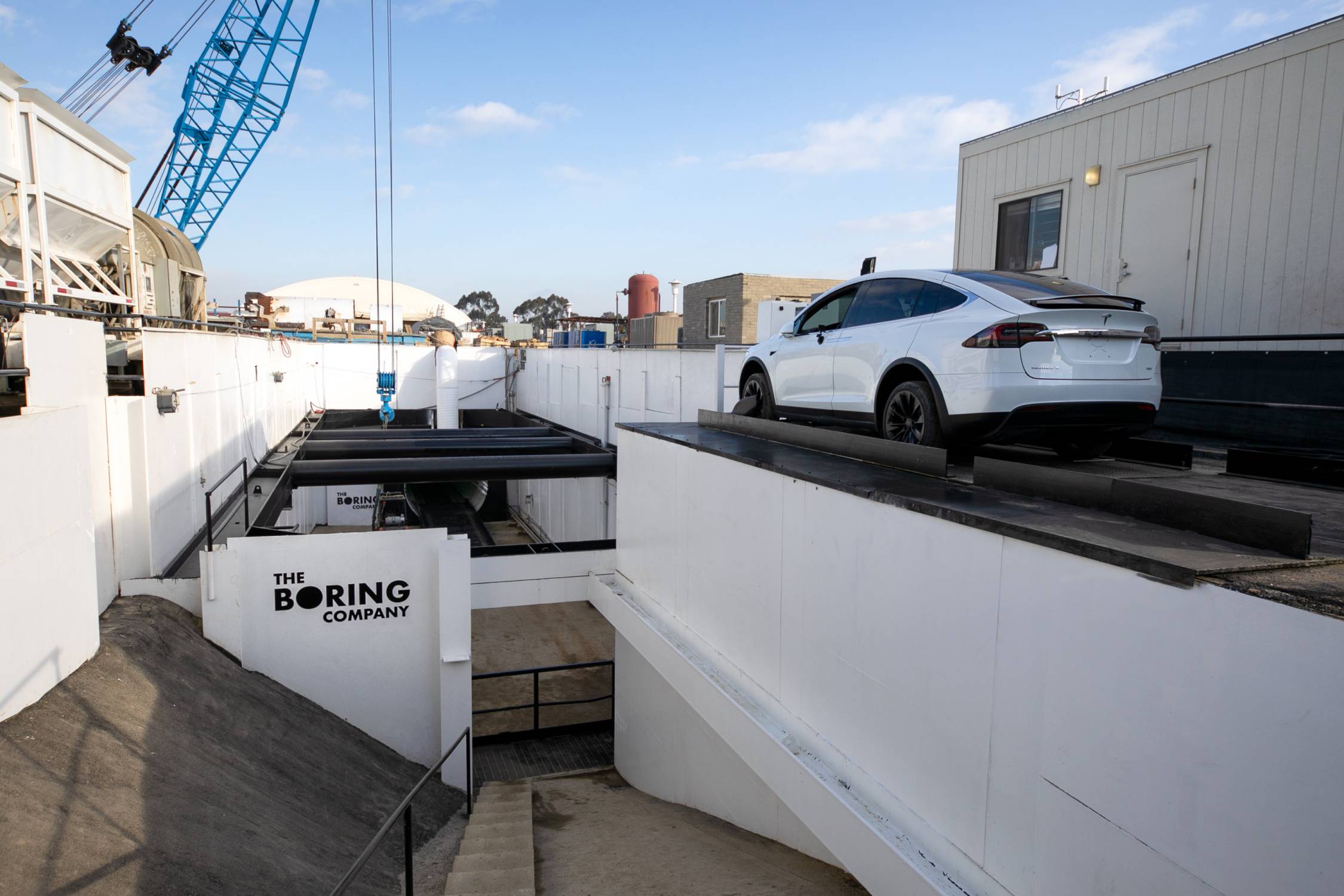
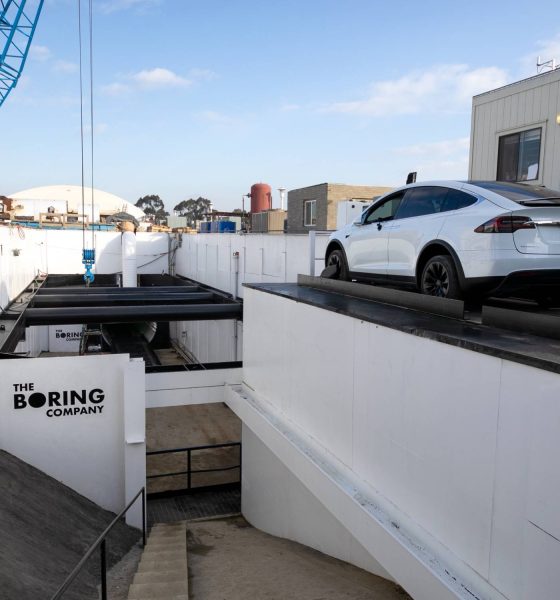
News
The Boring Company’s unveiling showed another Musk-driven disruption in the making
Before the opening party for the Hawthorne test tunnel began, Elon Musk gave a rather straightforward presentation about The Boring Company’s technology to members of the media. The discussion provided a number of pertinent updates and new information about the tunneling startup’s activities, several of which were reiterated when Musk took the stage to open the unveiling event.
As the Tesla and SpaceX CEO lightheartedly discussed the updated concepts of The Boring Company’s tunneling technology, it quickly became evident that Tuesday’s event could very well be the start of yet another Elon Musk-driven disruption.
Every single company that Elon Musk started, or played a part in starting, has gone on to be a disruptor of an established industry. In his 20s, Musk and his brother Kimbal shook up the widely established Yellow Pages industry with Zip2. Musk later took on traditional banking with X.com, which eventually merged with PayPal, one of the internet’s most established financial services that are still widely used today. Tesla, an electric car startup Musk backed in its very early days, is now an automaker forcing legacy carmakers to design and release compelling EVs. SpaceX, a company that could be considered as the culmination of Musk’s childhood dreams of interplanetary travel, is becoming more and more prevalent in the US space industry.
Man vs. Traffic pic.twitter.com/UDDE7oucKM
— TESLARATI (@Teslarati) December 19, 2018
In a way, Musk’s penchant for disruption results from his tendency to look at problems and adopt unconventional strategies to arrive at breakthrough results. In the case of SpaceX, for example, it was the company’s capability to reuse rockets that is allowing it to compete in the space industry. Electric vehicles existed before Tesla too, but the company made itself different by creating EVs that were desirable in both design and performance. This same thinking was evident when Musk presented his ideas for The Boring Company. The startup didn’t necessarily reinvent the wheel when it came to tunneling, but the company did employ a number of novel solutions that allowed it to make tunneling a lot faster, for a far lower price.
At the core of The Boring Company’s concepts are its smaller tunnel designs, which feature roughly half the diameter of conventional tunnels. This, according to the startup, reduces costs by 3-4 times. The Boring Company is also aiming to develop ways to increase the speed of its Tunnel Boring Machines (TBMs). Traditional TBMs are notable for their slow speed, and Elon Musk has lightly noted that a snail is effectively 14 times faster than a boring machine. As such, the Boring Co. aims to develop TBMs that can actually keep pace with a snail. The Hawthorne test tunnel provides a glimpse of the cost savings associated with the company’s tunnel design as well, as the 1.14-mile project was completed with just $10 million of funding. Musk notes that conventional tunneling projects, which use larger tunnels and slower machines, can balloon to up to $1 billion per mile.
A shrine to the late Gary who inspired it all. Pineapple gummies to celebrate. pic.twitter.com/ZFTbui6TcC
— TESLARATI (@Teslarati) December 19, 2018
Musk has mentioned that The Boring Company has been working on improving the capabilities of its TBMs. For its next-gen machine, Musk stated that the tunneling startup had developed a new TBM cutter head that operates faster, allowing it to process and move dirt in a more efficient manner. The Tesla and SpaceX CEO further noted that The Boring Company is developing a system that will enable reinforcement segments to be created and set up on site. The company is even planning on using the dirt from the cutter head as material for tunnel reinforcements. Such a system would allow the tunneling startup to increase its digging speeds even further, especially considering that conventional tunneling practices usually involve only 10% of actual digging, with 90% of operations usually being consumed by the laying of tunnel reinforcements.
Being a company started by Elon Musk, The Boring Company is in a constant state of innovation. This was evident in the updates to the electric skates design that were initially planned for the Loop system. Concepts of the high-speed tunnels involved vehicles traveling on electric skates. On Tuesday, though, Musk noted that “There won’t be a skate. The vehicle is the skate.” Such a system was adopted in the Hawthorne tunnel’s test rides, where a Model X fitted with electric skates on its front wheels was used to transport passengers through the tunnel. Even the garage-elevator that would be used to lift vehicles back onto the road is created with efficiency in mind, being pre-fabricated and constructed off-site.
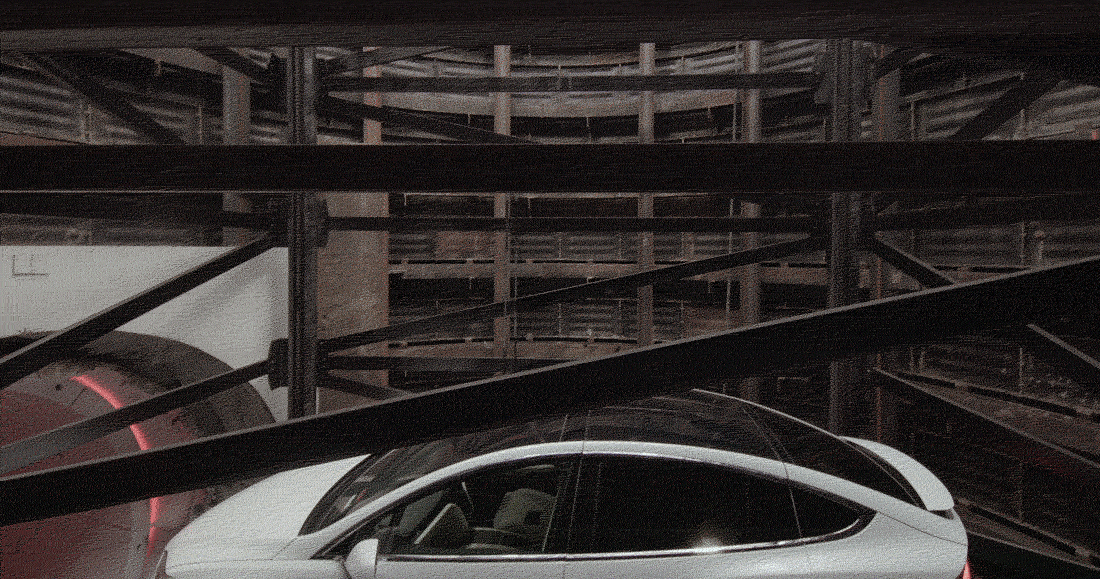
Just like his other ventures, The Boring Company has the potential to be a disruptor. With its ultra-high-speed tunnels, the startup might actually help solve the problem of traffic congestion. The Boring Company’s tunnels could even be a stepping stone towards the eventual creation of Hyperloop transportation, which involves pods traveling inside low-pressure tubes at speeds of up to 700 mph. The Boring Company’s disruption might not only be limited to transportation, either, as the startup is also poised to release the Boring Bricks, which are blocks made from tunneling rock that could be used for low-cost housing. Permits for the creation of The Brick Store, a physical outlet where these blocks are set to be sold, have also been.
The Boring Company might be a fun startup, complete with Not-a-Flamethrowers, pet snails, sharp-tongued French knights, and a Monty Python-style watchtower made of Boring Bricks, but beneath all the unveiling event’s fun atmosphere was the sense that there is another disruption in the making — one that could complement the innovations being pushed by SpaceX and Tesla.

News
Tesla dispels reports of ‘sales suspension’ in California
“This was a “consumer protection” order about the use of the term “Autopilot” in a case where not one single customer came forward to say there’s a problem.
Sales in California will continue uninterrupted.”

Tesla has dispelled reports that it is facing a thirty-day sales suspension in California after the state’s Department of Motor Vehicles (DMV) issued a penalty to the company after a judge ruled it “misled consumers about its driver-assistance technology.”
On Tuesday, Bloomberg reported that the California DMV was planning to adopt the penalty but decided to put it on ice for ninety days, giving Tesla an opportunity to “come into compliance.”
Tesla enters interesting situation with Full Self-Driving in California
Tesla responded to the report on Tuesday evening, after it came out, stating that this was a “consumer protection” order that was brought up over its use of the term “Autopilot.”
The company said “not one single customer came forward to say there’s a problem,” yet a judge and the DMV determined it was, so they want to apply the penalty if Tesla doesn’t oblige.
However, Tesla said that its sales operations in California “will continue uninterrupted.”
It confirmed this in an X post on Tuesday night:
This was a “consumer protection” order about the use of the term “Autopilot” in a case where not one single customer came forward to say there’s a problem.
Sales in California will continue uninterrupted.
— Tesla North America (@tesla_na) December 17, 2025
The report and the decision by the DMV and Judge involved sparked outrage from the Tesla community, who stated that it should do its best to get out of California.
One X post said California “didn’t deserve” what Tesla had done for it in terms of employment, engineering, and innovation.
Tesla has used Autopilot and Full Self-Driving for years, but it did add the term “(Supervised)” to the end of the FSD suite earlier this year, potentially aiming to protect itself from instances like this one.
This is the first primary dispute over the terminology of Full Self-Driving, but it has undergone some scrutiny at the federal level, as some government officials have claimed the suite has “deceptive” naming. Previous Transportation Secretary Pete Buttigieg was vocally critical of the use of the name “Full Self-Driving,” as well as “Autopilot.”
News
New EV tax credit rule could impact many EV buyers
We confirmed with a Tesla Sales Advisor that any current orders that have the $7,500 tax credit applied to them must be completed by December 31, meaning delivery must take place by that date. However, it is unclear at this point whether someone could still claim the credit when filing their tax returns for 2025 as long as the order reflects an order date before September 30.
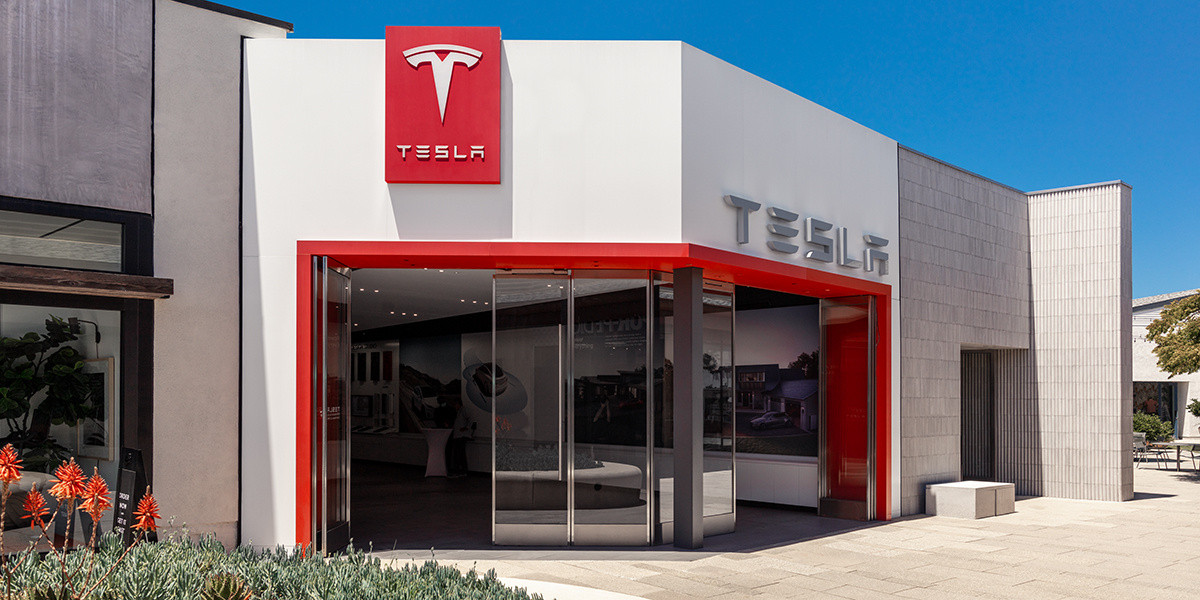
Tesla owners could be impacted by a new EV tax credit rule, which seems to be a new hoop to jump through for those who benefited from the “extension,” which allowed orderers to take delivery after the loss of the $7,500 discount.
After the Trump Administration initiated the phase-out of the $7,500 EV tax credit, many were happy to see the rules had been changed slightly, as deliveries could occur after the September 30 cutoff as long as orders were placed before the end of that month.
However, there appears to be a new threshold that EV buyers will have to go through, and it will impact their ability to get the credit, at least at the Point of Sale, for now.
Delivery must be completed by the end of the year, and buyers must take possession of the car by December 31, 2025, or they will lose the tax credit. The U.S. government will be closing the tax credit portal, which allows people to claim the credit at the Point of Sale.
🚨UPDATE: $7,500 Tax Credit Portal “Closes By End of Year”.
This is bad news for pending Tesla buyers (MYP) looking to lock in the $7,500 Tax Credit.
“it looks like the portal closes by end of the year so there be no way for us to guarantee the funds however, we will try our… pic.twitter.com/LnWiaXL30k
— DennisCW | wen my L (@DennisCW_) December 15, 2025
We confirmed with a Tesla Sales Advisor that any current orders that have the $7,500 tax credit applied to them must be completed by December 31, meaning delivery must take place by that date.
However, it is unclear at this point whether someone could still claim the credit when filing their tax returns for 2025 as long as the order reflects an order date before September 30.
If not, the order can still go through, but the buyer will not be able to claim the tax credit, meaning they will pay full price for the vehicle.
This puts some buyers in a strange limbo, especially if they placed an order for the Model Y Performance. Some deliveries have already taken place, and some are scheduled before the end of the month, but many others are not expecting deliveries until January.
Elon Musk
Elon Musk takes latest barb at Bill Gates over Tesla short position
Bill Gates placed a massive short bet against Tesla of ~1% of our total shares, which might have cost him over $10B by now
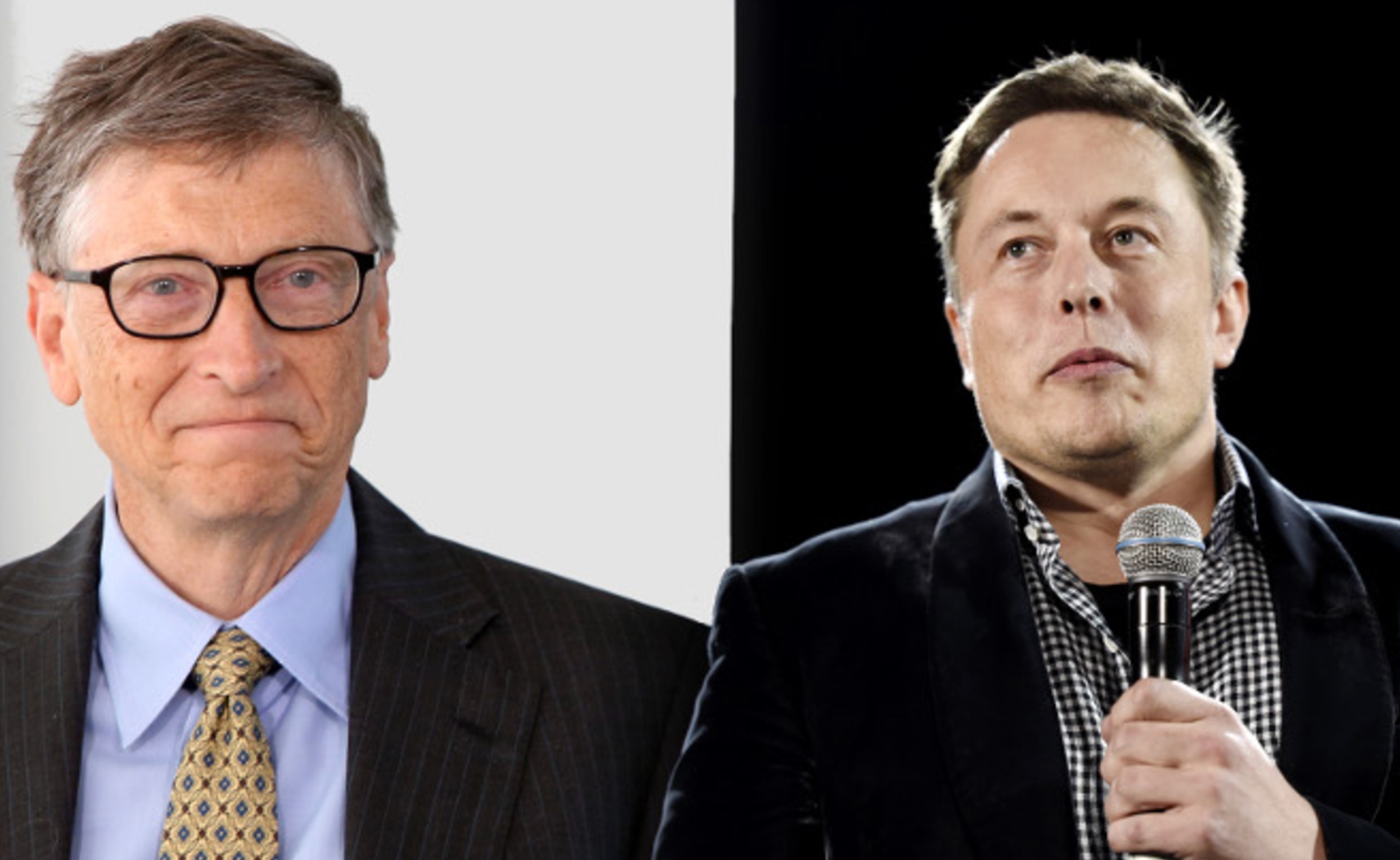
Elon Musk took his latest barb at former Microsoft CEO Bill Gates over his short position against the company, which the two have had some tensions over for a number of years.
Gates admitted to Musk several years ago through a text message that he still held a short position against his sustainable car and energy company. Ironically, Gates had contacted Musk to explore philanthropic opportunities.
Elon Musk explains Bill Gates beef: He ‘placed a massive bet on Tesla dying’
Musk said he could not take the request seriously, especially as Gates was hoping to make money on the downfall of the one company taking EVs seriously.
The Tesla frontman has continued to take shots at Gates over the years from time to time, but the latest comment came as Musk’s net worth swelled to over $600 billion. He became the first person ever to reach that threshold earlier this week, when Tesla shares increased due to Robotaxi testing without any occupants.
Musk refreshed everyone’s memory with the recent post, stating that if Gates still has his short position against Tesla, he would have lost over $10 billion by now:
Bill Gates placed a massive short bet against Tesla of ~1% of our total shares, which might have cost him over $10B by now
— Elon Musk (@elonmusk) December 17, 2025
Just a month ago, in mid-November, Musk issued his final warning to Gates over the short position, speculating whether the former Microsoft frontman had still held the bet against Tesla.
“If Gates hasn’t fully closed out the crazy short position he has held against Tesla for ~8 years, he had better do so soon,” Musk said. This came in response to The Gates Foundation dumping 65 percent of its Microsoft position.
Tesla CEO Elon Musk sends final warning to Bill Gates over short position
Musk’s involvement in the U.S. government also drew criticism from Gates, as he said that the reductions proposed by DOGE against U.S.A.I.D. were “stunning” and could cause “millions of additional deaths of kids.”
“Gates is a huge liar,” Musk responded.
It is not known whether Gates still holds his Tesla short position.








